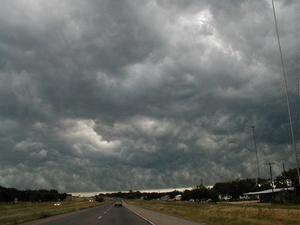Disaster lossesApril storms lead to first billion-dollar losses of 2014
The outbreak of severe weather throughout the United States and other parts of the world in April will prove to have caused the largest economic losses since 2013, according to a report. During the month in the United States, at least 39 people were killed and 250 injured amid nearly 70 confirmed tornado touchdowns, which occurred across more than 20 states in the Plains, Mississippi Valley, Southeast, Midwest, and Mid-Atlantic.

Heavy storms yield higher costs // Source: baylor.edu
The outbreak of severe weather throughout the United States and other parts of the world in April will prove to have caused the largest economic losses since 2013, according to a report from the analysis company Impact Forecasting.
Insurance Journal reports that during the month in the United States, “At least 39 people were killed and 250 injured amid nearly 70 confirmed tornado touchdowns, which occurred across more than 20 states in the Plains, Mississippi Valley, Southeast, Midwest, and Mid-Atlantic.”
Even something rarer, such as the softball-sized hail in Denton, Texas led to losses totaling up to $650 million.
In their Global Catastrophe Recap, the company also reported that “China suffered four separate stretches of severe thunderstorms and heavy rainfall. According to the Ministry of Civil Affairs, the events killed nine people and damaged more than 40,000 homes.” In that case, too, losses were listed at $1 billion.
Earthquakes proved to be another factor, with an 8.2-magnitude event on the coast of Chile killing seven people and damaging 13,000 homes. Flooding and landslides also devastated Afghanistan, where “An estimated 2,665 people were killed, including 2,500 in a massive landslide in Badakhshan province.”
Even melting snowpack and wildfires proved to be a major threat with intensive snow melt flooding in Romania, Serbia and Bulgaria, killing four people and leading to millions in damage. In Chile, wildfire damage led to fifteen deaths and the destruction of 2,900 homes — an additional $34 million in losses.
Adam Podlaha, the head of Impact Forecasting, said that “the recent outbreaks have emphasized the importance of historical data analysis for insurers and reinsurers when trying to forecast future losses.”
